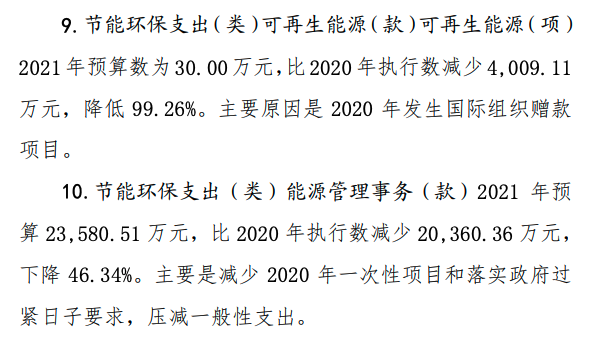
UPDATE - How do China's Party leadership and its bureautic machine operate to ensure the achievement of the country's 14th Five-year Plan (14FYP) and accelerate the actions required to hit the 'dual-carbon goals' on peak emissions and carbon neutrality?
https://twitter.com/LHongqiao/status/1373925572703887360?s=20
The Party | China's leader Xi Jinping reconfirmed (t.ly/AEMQ) & reassured (t.ly/cRKK) China's determination on the dual-carbon goals.
"This will undoubtedly be a 'tough battle'", says Xi, using a similar narrative to the 'war on pollution' in 2013.
1/n
"This will undoubtedly be a 'tough battle'", says Xi, using a similar narrative to the 'war on pollution' in 2013.
1/n

To ensure the Party's leadership, the Central Ecological and Environmental Inspection Team (CEEIT) is further institutionalised (new administrative measures: t.ly/fu1R). Its work is prioritised and enforced despite a general budget cut.
2/n
https://twitter.com/LHongqiao/status/1376284565883469826?s=20
2/n
A new 'leaders group' directed by the CCCPC is formed to mobilise and coordinate the bureaucrats. Led by vice-premier Han Zhen (Xi's "left hand"), it's said to be the "highest governing body" of dual-carbon related work.
Explainer by @xiaoying_you⬇️
t.ly/ne7t
3/n
Explainer by @xiaoying_you⬇️
t.ly/ne7t
3/n
The absolute leadership of the Party on climate is also reflected in the "study weeks" and "inspection tours" of Party Groups at all levels, covering the State Council's ministries and local government's micro-units. Failing to follow? Price is high⬇️
4/n
https://twitter.com/LHongqiao/status/1386620888666288129?s=20
4/n
The MEE | The Ministry of Ecology and Environment has been very busy revamping the climate regulatory system. One major focus is seeking the synergy between pollution prevention and control and decarbonisation (a new mandate for the MEE since 2018). t.ly/pjWx
5/n
5/n

A comprehensive guiding opinion addressing the synergy was released in January (t.ly/duAe), followed by more detailed policies in the last few months. Among them, incorporating climate impacts to EIA & integrating GHG to environment monitoring move the fastest.
6/n
6/n

2.3 At the municipal level, Chongqing introduced an interim technical guideline on assessing the impacts of carbon emissions for steel, power, building materials, non-ferrous metals and chemicals in Feb 2021 (t.ly/hwXc).
More pilots: finance.sina.com.cn/chanjing/cyxw/…
7/n
More pilots: finance.sina.com.cn/chanjing/cyxw/…
7/n
At the national level, the policy proposal of integrating climate impacts to Environmental Impact Assessment (EIA) is tightened within less than 2 months. It's clear that the MEE is leveraging EIA, its most handy tool, to hit two goals at the same time.
8/n
https://twitter.com/LHongqiao/status/1399696636843077636?s=20
8/n
The gunpowder is mostly aimed at 'dual-high projects', which includes 5 industrial sectors (petrochemical, chemical, steel, non-ferrous metals & building materials), and coal power. The MEE's advisory proposes them to peak emissions by 2025 & 2030.
9/n
https://twitter.com/LHongqiao/status/1402211655082201090?s=20
9/n

Real-time GHG monitoring pilots are also targeted on the power and steel sector for their significant emissions. The MEE attempts to mobilise 10 companies to kick start the monitoring of GHG emissions from the energy and industry process. (ibit.ly/Efln)
10/n
10/n
The ETS | Positioned as a "major tool", the national emissions trading scheme (ETS) has entered its "final stretch". In May, the MEE released 3 interim rules governing registration, trading & settlement (t.ly/psnl), to complete the rulebook for trading in June.
11/n
11/n
Other prep-work:
- issued new rules on MRV
- clarified timelines for 2021
- released an updated draft of a State-Council level administrative regulation
- approved a carbon future market in Guangdong
- planned a CCER trading centre in Beijing
12/n
- issued new rules on MRV
- clarified timelines for 2021
- released an updated draft of a State-Council level administrative regulation
- approved a carbon future market in Guangdong
- planned a CCER trading centre in Beijing
https://twitter.com/LHongqiao/status/1376812820080254976?s=20
12/n
Half-year away from the start of this implementation cycle, the China ETS is still scheduled to “start trading by the end of June” (t.ly/SiTp). In 6 months, a total of 2,225 power generators (incl. captive power plants) will complete trading for 2019-2020.
13/n
13/n
The China ETS is expected to cover 40% of China’s emissions from combustion. The enthusiasm for a "trillion-CNY market" also pushes the price to hike in ETS pilots (t.ly/Vdgo). However, the price expectation for China ETS remains low (is.gd/90foqW).
14/n
14/n

Prof ZHANG Xiliang from Tsinghua University, who leads the upper-level design of the national ETS, says in the future, the national ETS can cover 72% of China's total CO2 emissions when it covers 7500 companies from eight sectors, as designed. (ibit.ly/dJrS)
15/n
15/n
The NDRC | It's been a mystery about who is actually leading the drafting of the National Action Plan for 2030 Peak Emissions - the environment ministry MEE or the economic planner NDRC? In practice, NDRC oversees energy while the MEE eyes on CO2.
16/n
https://twitter.com/LHongqiao/status/1385502347124690944?s=20
16/n
The NDRC's work on climate change has three major themes
- industry decapacity
- energy-saving
- decarbonising the energy system
It sets control targets on energy intensity, absolute energy consumption, coal consumption reduction and replacement, and renewable consumption.
17/n
- industry decapacity
- energy-saving
- decarbonising the energy system
It sets control targets on energy intensity, absolute energy consumption, coal consumption reduction and replacement, and renewable consumption.
17/n
In parallel, the NDRC also leads the nationwide 'energy system reform' (ibit.ly/2E92), which covers all aspects of the energy system. The general goal of the reform is to develop a competitive, efficient and orderly energy market where the market forms the price.
18/n
18/n
In May, the NDRC published an action plan about deepening 'price mechanism reform'. ibit.ly/wRiV
Priorities on energy pricing reform:
- electricity tariff
- green electricity tariff (discriminated tariff for dual-high)
- oil & gas
- natural gas pipeline transportation
Priorities on energy pricing reform:
- electricity tariff
- green electricity tariff (discriminated tariff for dual-high)
- oil & gas
- natural gas pipeline transportation
• • •
Missing some Tweet in this thread? You can try to
force a refresh










